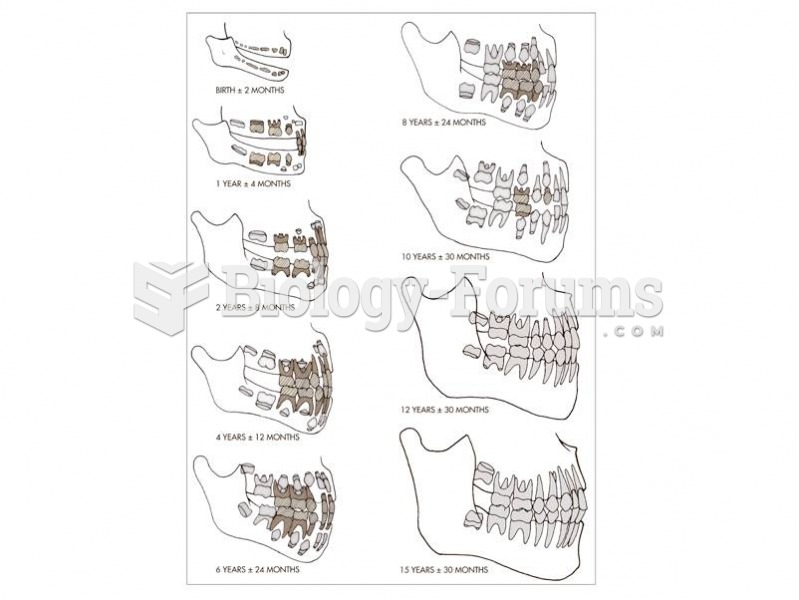|
|
|
When blood is deoxygenated and flowing back to the heart through the veins, it is dark reddish-blue in color. Blood in the arteries that is oxygenated and flowing out to the body is bright red. Whereas arterial blood comes out in spurts, venous blood flows.
The effects of organophosphate poisoning are referred to by using the abbreviations “SLUD” or “SLUDGE,” It stands for: salivation, lacrimation, urination, defecation, GI upset, and emesis.
Prostaglandins were first isolated from human semen in Sweden in the 1930s. They were so named because the researcher thought that they came from the prostate gland. In fact, prostaglandins exist and are synthesized in almost every cell of the body.
Although the Roman numeral for the number 4 has always been taught to have been "IV," according to historians, the ancient Romans probably used "IIII" most of the time. This is partially backed up by the fact that early grandfather clocks displayed IIII for the number 4 instead of IV. Early clockmakers apparently thought that the IIII balanced out the VIII (used for the number 8) on the clock face and that it just looked better.
In most cases, kidneys can recover from almost complete loss of function, such as in acute kidney (renal) failure.
 The Warm Mineral Springs individuals from Florida may be among the earliest Paleo-Indian skeletal re
The Warm Mineral Springs individuals from Florida may be among the earliest Paleo-Indian skeletal re
 Tooth development and eruption are commonly used to assess age in the subadult skeleton. Deciduous (
Tooth development and eruption are commonly used to assess age in the subadult skeleton. Deciduous (





